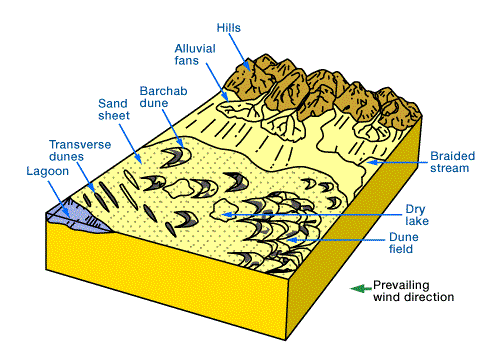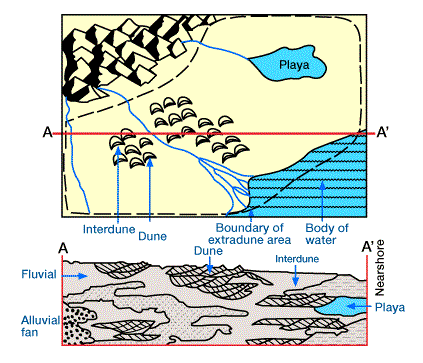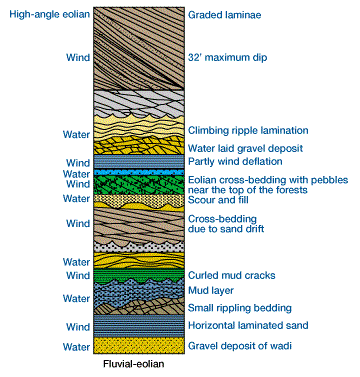Associated Facies Eolian Environments
Generally speaking, desert dune areas are determined by a limited range of physical parameters, most of which do not involve the depositional variations introduced by water. For this reason, subfacies in this environment are localized and usually minor. In addition, the often regional continuity of sand means that facies changes are large-scale. Frequently, adjacent environments are thickly evaporitic, whether coastal (wadisabkha) or inland (large salt lakes). Associated desert facies have already been mentioned; they often include alluvial fans, bajadas, playas, braided streams.(Figure 1, Idealized block diagram of a generic desert environment.) The occurrence of sand dunes on barrier islands and spits has also been discussed.

Today, a number of dune complexes are trimmed by rivers (which cannot be overcome by dune migration) and their alluvial plains.
In addition to these common associations, eolianites frequently occur immediately above a major unconformity, or as one of several facies sandwiched within a series of more minor erosion surfaces marking an episode of fluctuation between sandy marine and nonmarine environments.
(Figure 2 and Figure 3,

Eolian depositional regime showing complex stratigraphic relations between dune, interdune, playa, and alluvial deposits).

This desert coast, marginal marine depositional scheme is apparently responsible for the subaerial/subaqueous confusion and controversy surrounding a number of well-known stratigraphic intervals in the western United States. Most of these have been mentioned above and are traditional hydrocarbon reservoirs for large parts of the Rocky Mountain region. To some degree, the difficulties and controversies involving these rocks have shown that the definitive separation of eolian and marine facies becomes at some point an academic exercise (Ahlbrandt and Fryberger 1982).
 Petro Shine The Place for Oil and Gas Professionals.
Petro Shine The Place for Oil and Gas Professionals.



